未来式绿色能源建筑——萨夫迪作品

“该中心为我们提供了设计一个用于学习和研究的开明空间的机会,一个互动交流和与自然的紧密联系可以培养下一代医学领袖的空间。” ——摩西·萨夫迪
“The center afforded us the opportunity of designing an enlightened space for learning and research, one where interactive exchange, and a strong connection to nature could foster the next generations of medical leaders.” – Moshe Safdie
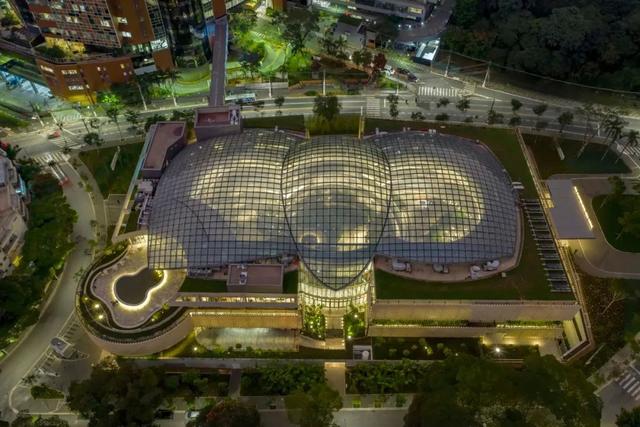
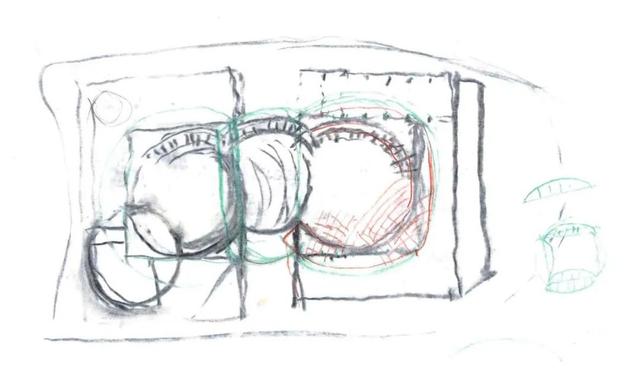
▲ 设计草图
教育和研究项目。该项目将医学、护理和研究生学习以及医学研究活动都集中在一个屋檐下,直接与医院主楼相连。AEERC项目反映了爱因斯坦对教育、研究和医疗服务的跨学科方法,以及他们对21世纪的医学教学和实践的看法。
该项目提供了40间技术支持的教室,可通过可操作的隔断进行划分,家具配置灵活,便于30至60名学生的团队学习。其他教育设施包括一个有400个座位的多功能礼堂,用于研究解剖学和形态学的学术实验室,以及用于复制检查室、诊所和手术室的最先进的模拟设施。医学和护理学混合课程,即医生和护士在同一设施中共同学习,为2000名学生提供服务。
Educational and Research Program. The program brings medical, nursing, and graduate studies, as well as medical research activities all under one roof, connected directly to the main hospital complex. The AEERC project reflects Einstein’s interdisciplinary approach to education, research, and healthcare delivery, and their perspective on how medicine should be taught and practiced in the 21st century. The project provides 40 technology-supported classrooms, divisible by operable partitions with flexible furniture configurations that facilitate team-based learning for 30 to 60 students. Other educational facilities include a 400-seat multi-purpose auditorium, academic laboratories for the study of anatomy and morphology, as well as state-of-the art simulation facilities to replicate examination rooms, clinics, and operating rooms. The medical and nursing mixed curriculum, in which doctors and nurses study together in the same facilities, serves 2,000 students.
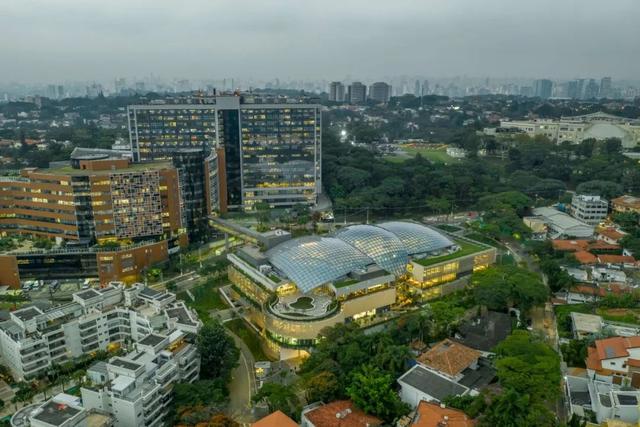
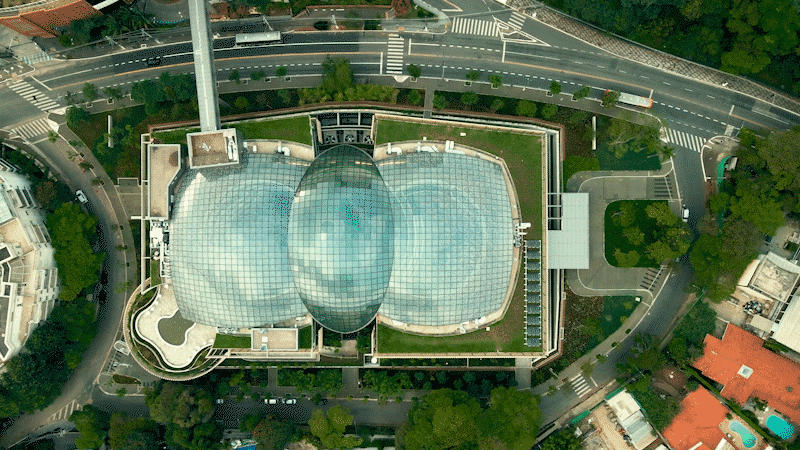
最先进的研究设施包括实验分子生物学实验室,包括一个组织培养设施和2个生物安全2级(BSL-2)室;纳米技术;流式细胞仪设施;显微镜设施;基因组学设施;细胞研究和基因治疗的清洁室。实验室配备了模块化的实验室家具系统和可适应的服务模块,以提高灵活性。
State-of-the-art research facilities include laboratories for Experimental Molecular Biology, including a Tissue Culture facility and 2 Biosafety Level 2 (BSL-2) rooms; Nanotechnology; Flow cytometry facility; Microscopy Facility; Genomics Facility; Clean Rooms for Cellular Research and Gene Therapy. Laboratories are equipped with modular lab furniture systems and adaptable service modules for flexibility.
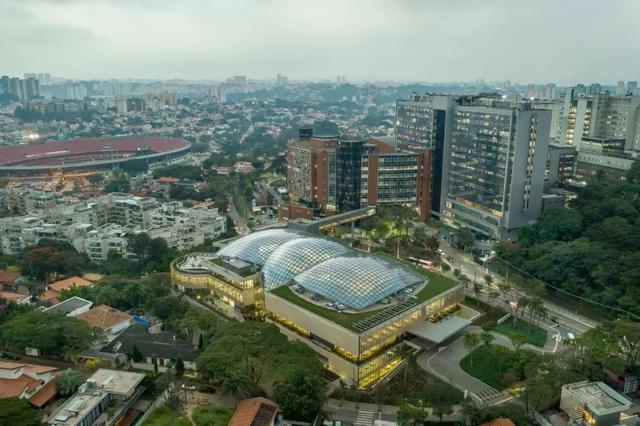
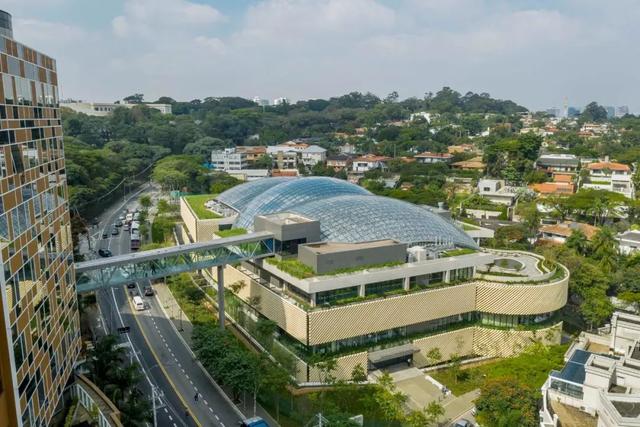
天窗和遮阳结构。3,800平方米的玻璃屋顶被设计成三个集成的结构穹顶,作为一个网格壳,以最小的结构钢重量有效地拱卫86米以上的空间。屋顶被设计成一个过滤阳光、减轻热量和吸收声音的层的组合。外层天窗由1854块超透明玻璃板组成,涂有三层银色防晒层以减少热量,并印有半透明陶瓷点的图案以遮挡阳光。该玻璃具有最小的反射率,以避免干扰外部反射。
Skylight Structure and Shading. The 3,800-square-meter glass roof is designed as three integrated structural domes, which act as a grid-shell to efficiently vault 86m+ with minimum structural steel weight. The roof is designed as an assembly of layers that filter sunlight, mitigate heat, and absorb sound. The outer skylight is made up of 1,854 ultra-transparent glass panels, coated with triple-silver solar protection to reduce heat gain, and printed with a pattern of translucent ceramic dots to shade sunlight. The glass has minimal reflectivity to avoid disturbing exterior reflections.
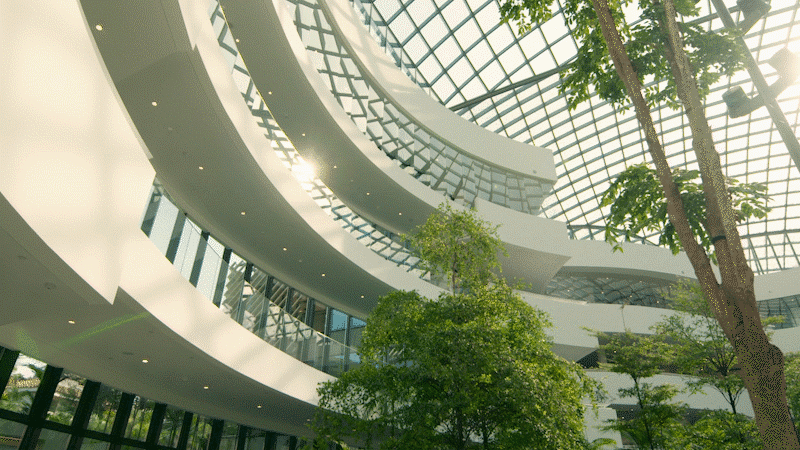

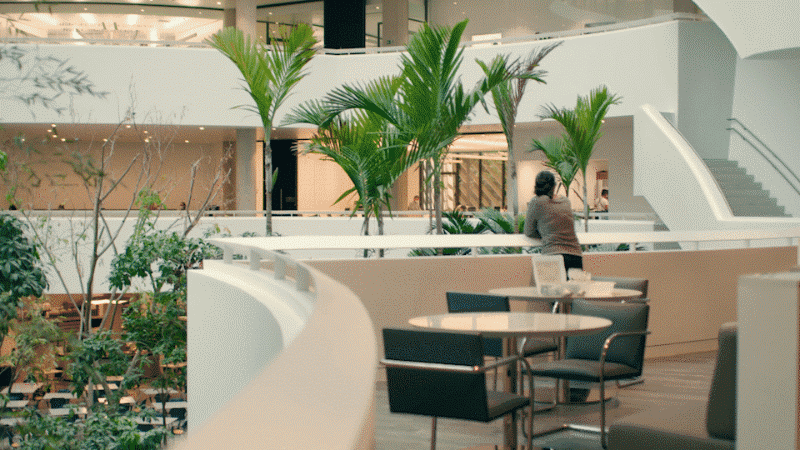
屋顶的内层是透明薄膜,微穿孔以吸收噪音,并印有定制的半透明点图案,提供遮阳,但也能在光线下发光。朝向东端和西端的点密度增加,遮蔽了低角度的太阳,而中央圆顶完全透明,让充足的阳光照射到中央花园更密集的植物上。从下方看,层层叠叠的圆点就像透过树叶重叠看到斑驳的阳光,让人有置身于树冠下的感觉。
The inner layer of the roof is a transparent membrane, micro-perforated to absorb noise and printed with a custom pattern of translucent dots that provide shading, but also glow in the light. The increasing density of dots towards the East and West ends shades low-angle sun, while the central dome is entirely clear, allowing full sunlight to reach the denser planting in the center garden. As seen from below, the overlapping layers of dots are like seeing dappled sunlight through the overlapping leaves of a tree, evoking the feeling of being under a tree canopy.
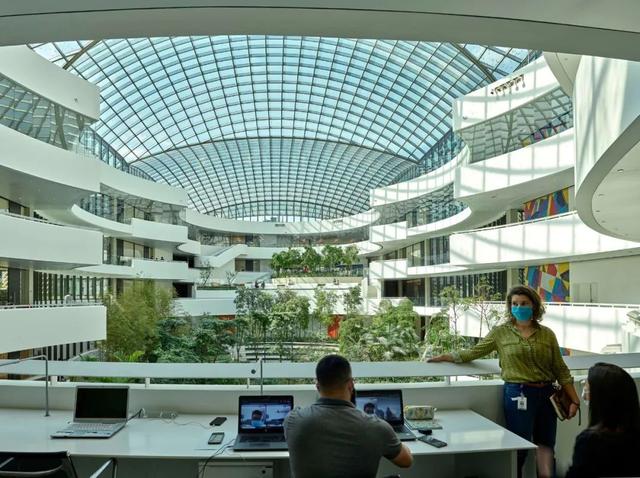
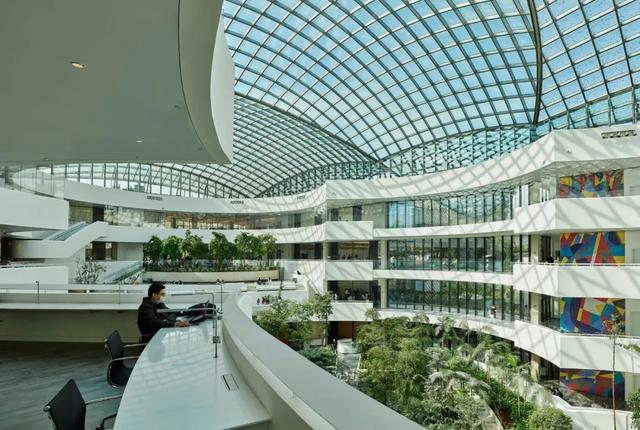
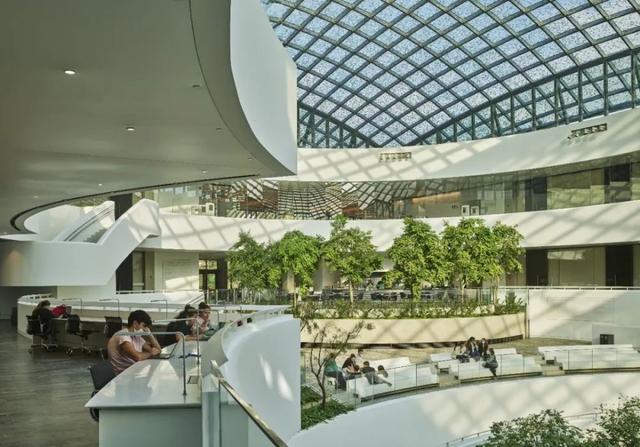
太阳之光(Brises Soleil)。连续的全高玻璃幕墙为实验室和教室提供了广泛的日光。围墙的设计是这样的:交替的楼层被深深的悬垂所遮挡,或者被太阳桥所遮挡,以控制日光和眩光,同时保留了附近的景观。百叶窗的机翼形状,以及它们的角度和间距,是通过计算机太阳研究开发出来的,并通过全尺寸物理模型进行测试。百叶窗的方向是对角线或水平的,这取决于每个立面对太阳路径的方向。内部可操作的遮阳板和遮光板允许灵活的日光控制。
Brises Soleil. A continuous full-height glass façade gives extensive daylight to both labs and classrooms. The enclosure is designed such that alternating floors are either shaded by deep overhangs or screened by brises Soleil to control daylight and glare while preserving views of the neighborhood. The airfoil shape of the louvers, as well as their angle and spacing, was developed using computer sun studies and tested with full-scale physical models. The louvers are oriented either diagonally or horizontally, depending on the orientation of each façade to the path of the sun. Interior operable solar shades and black-out shades allow for flexible daylight control.
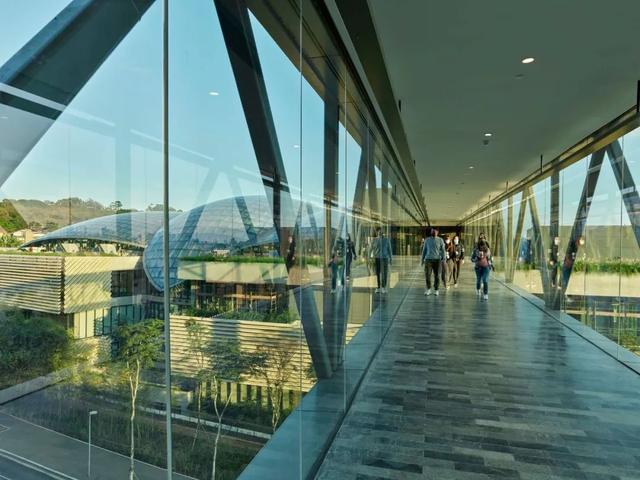
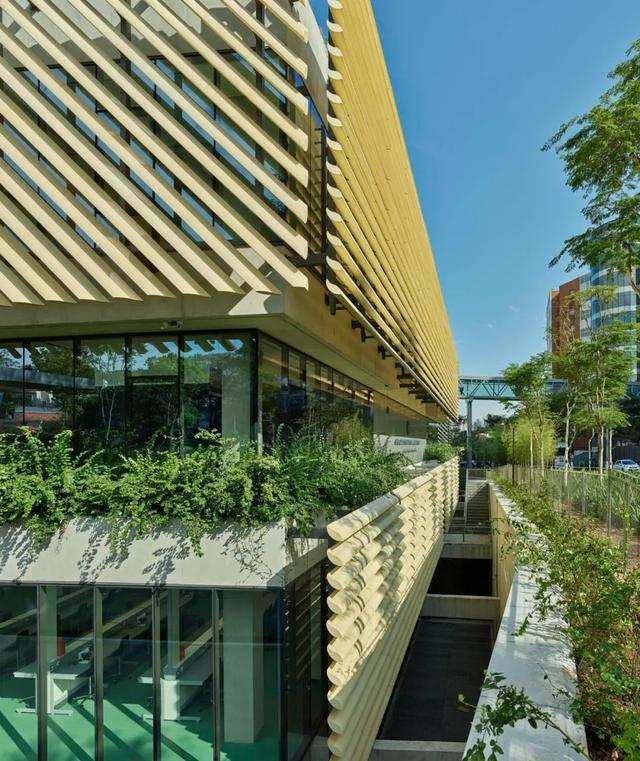
环境控制。中庭花园是该项目学习、合作和社区空间的核心。一个复杂的环境控制系统致力于维持一个舒适和健康的建筑环境,这是该项目可持续发展目标的关键。机械系统的设计仅在需要的地方以低水平和低速度向中庭提供冷却,以最大限度地提高舒适度,控制湿度,并尽量减少能源使用。
环境的设计也是为了平衡建筑内的湿度水平,提供舒适度,支持工厂的需求,同时也控制湿度以满足严格的实验室环境要求。广泛的流体动力学计算机模拟被用来模拟大量空间中的热量分层,并模拟火灾发生时的烟雾疏散
Environmental Controls. The atrium garden is the heart of the project’s learning, collaboration, and community spaces. A sophisticated environmental control system works to maintain a comfortable and healthy building environment, key to the sustainability goals of the project. The mechanical system was engineered to deliver cooling to the atrium only where required, at low level and at low velocity, to maximize comfort, control humidity, and minimize energy usage. The environment was also designed to balance humidity levels in the building, provide comfort, support plant needs, and also control humidity to meet strict laboratory environmental requirements. Extensive fluid dynamic computer simulations were used to model the stratification of heat in the voluminous space, and to simulate the evacuation of smoke in the event of a fire.
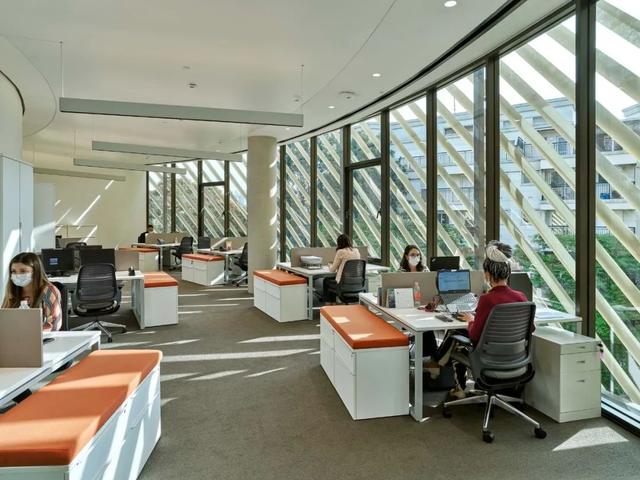
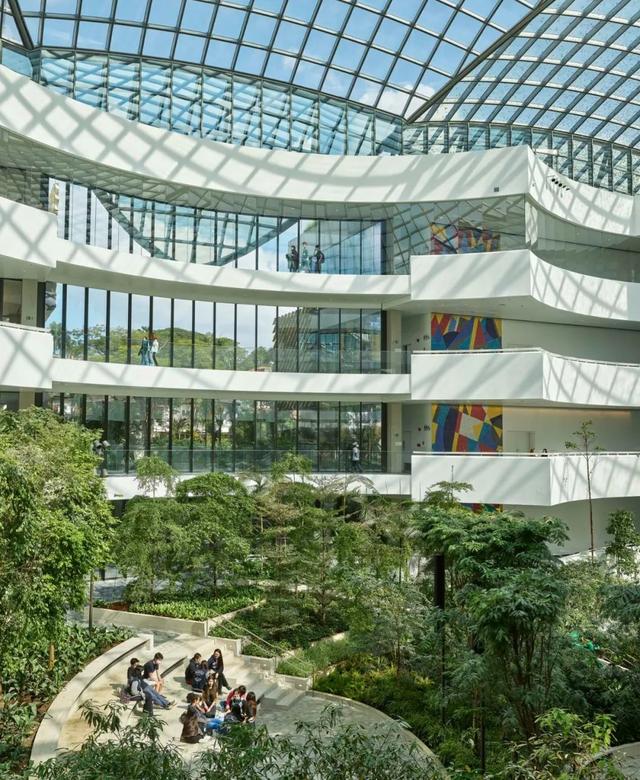
景观。该项目与巴西景观设计师Isabel Duprat合作设计,中庭花园种植了各种本地树种和林下植物。梯田植物加强了中庭的弯曲几何形状,看起来像是从大地上雕刻出来的。树木和植物的分层创造了各种各样的空间,从社会露天剧场和展览空间到安静的亲密空间,座位围绕着一个小喷泉。
由于在完全控制的环境下建造如此规模的原生树木花园在巴西是前所未有的,国际景观、环境和园艺团队在物种选择、土壤混合、花盆设计、灌溉、维护和控制系统等各个方面进行了两年的研究,借鉴了新加坡的海湾花园和宝石项目、英国的邱园和伊甸园项目等项目。
Landscape. Designed in collaboration with Brazilian landscape architect Isabel Duprat, the atrium garden is planted with a variety of native species of trees and understory plantings. The terraced planters reinforce the curving geometry of the atrium, appearing as if carved from the earth. The layering of trees and planting creates a variety of spaces, from the social amphitheater and exhibition space to quiet intimate spaces lined with seating around a small fountain. Since a garden of this size with native trees in a fully controlled environment was unprecedented in Brazil, the international landscape, environmental and horticultural team undertook two years of research on various aspects such as species selection, soil mix, planter design, irrigation, maintenance, and control systems, learning from projects like Gardens by the Bay and Project Jewel in Singapore and Kew Gardens and the Eden Project in the UK.
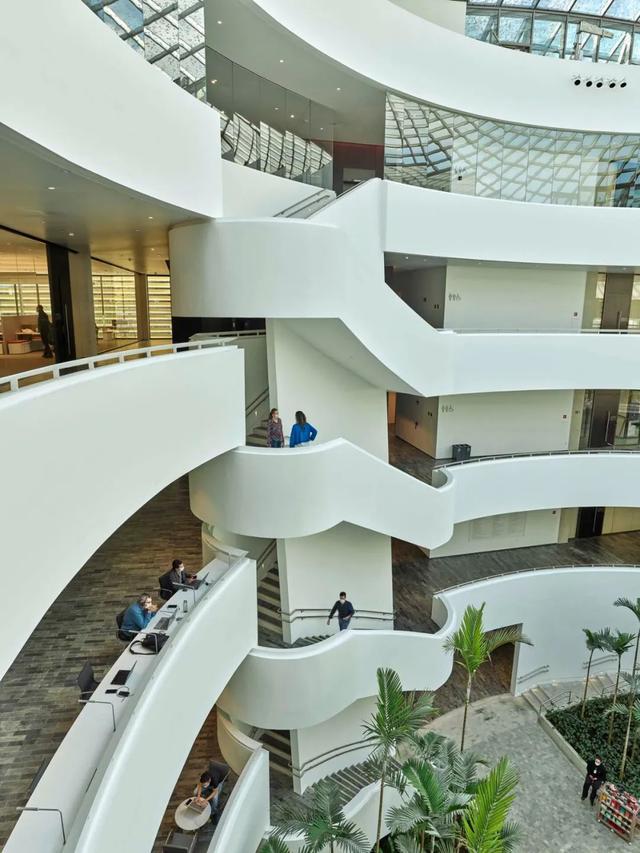
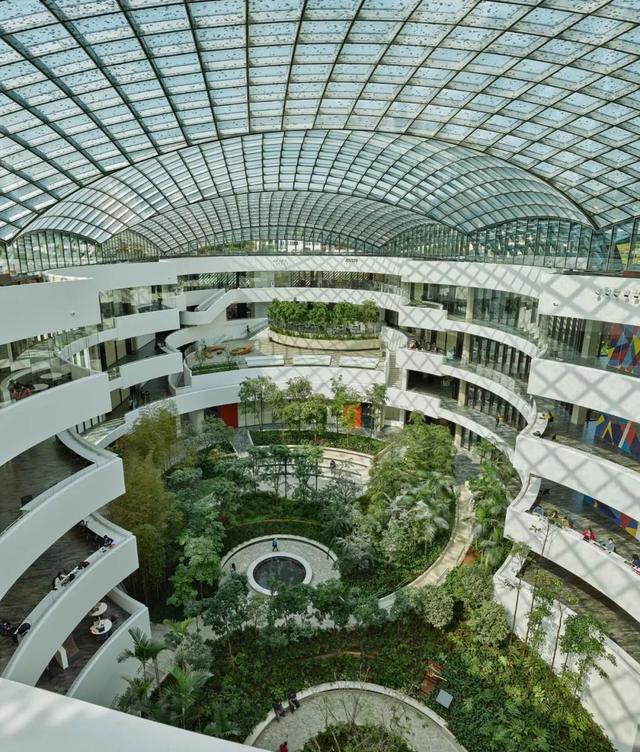
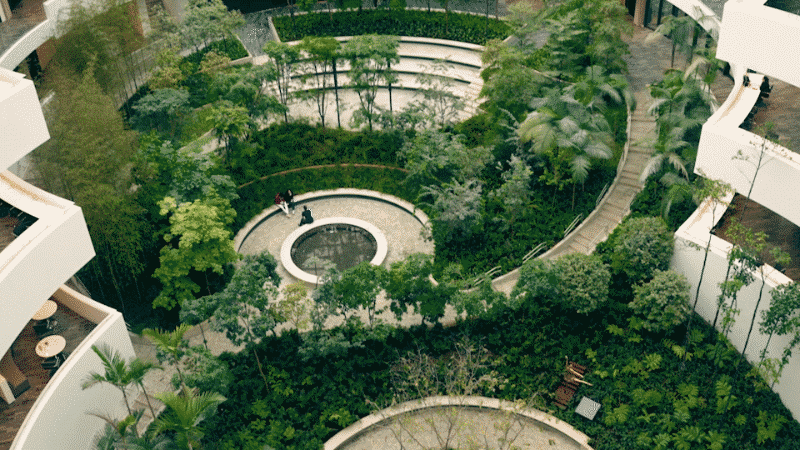
在移植之前,植物在圣保罗市外的一个苗圃中进行了为期两年的适应性训练,模拟了中庭的光照条件。根据三维计算机模型绘制的中庭不同区域的预期日照水平,对需要不同数量阳光才能茁壮成长的各种树种进行了定位。在中庭,种植了150多棵树,其中包括。Aspidosperma polyneuron(Peroba rosa)、Calycophyllum spruceanum(Capirona)、Euterpe edulis(Juçara palm)、Plinia cauliflora(Jabuticaba)、Holocalyx balansae、Inga sp.、Eriotheca candolleana、Lfoensia glyptocarpa、Cryptocarya aschersoniana、Nectandra megapotamica、Poecilanthe parviflora和Schinus mole。其中有几个物种具有在民间医学中用来治疗疾病的药用价值。
在外部,种植了180多棵树,包括Libidibia ferrea(Pau Ferro - 巴西铁木),Tabebuia roseoalba(白苕),Pterocarpus violaceus,(Aldrago),Lecythis Pisonis(奶油坚果),Hymenaea courbaril(Jatobá),Handroanthus avellanedae(粉色喇叭)。Handroanthus chrysotrichus(金喇叭),Caesalpinia pluviosa(孔雀花),Jacaranda cuspidifolia,Aspidosperma polyneuron,Cariniana rubra,Euterpe edulis,Paubrasilia echinata,Cassia leptophylla 和 Tibouchina granulosa。
Before being transplanted, plants were acclimatized during a two-year period in a nursery outside of São Paulo, which simulated the light conditions within the atrium. Various species of trees requiring different amounts of sunlight to thrive were positioned in response to a 3D computer model mapping expected daylight levels in different zones of the atrium.In the Atrium, 150+ trees were planted, including: Aspidosperma polyneuron (Peroba rosa), Calycophyllum spruceanum (Capirona), Euterpe edulis (Juçara palm), Plinia cauliflora (Jabuticaba), Holocalyx balansae, Inga sp., Eriotheca candolleana, Lafoensia glyptocarpa, Cryptocarya aschersoniana, Nectandra megapotamica, Poecilanthe parviflora and Schinus mole. Several of the species have medicinal properties used in folk medicine to treat diseases.On the exterior, 180+ trees were planted, including Libidibia ferrea (Pau Ferro – Brazilian Ironwood), Tabebuia roseoalba (White Ipê), Pterocarpus violaceus, (Aldrago), Lecythis Pisonis (Cream nut), Hymenaea courbaril (Jatobá), Handroanthus avellanedae (Pink trumpet), Handroanthus chrysotrichus (Golden trumpet), Caesalpinia pluviosa (Peacock flower), Jacaranda cuspidifolia, Aspidosperma polyneuron,Cariniana rubra, Euterpe edulis, Paubrasilia echinata, Cassia leptophylla and Tibouchina granulosa.
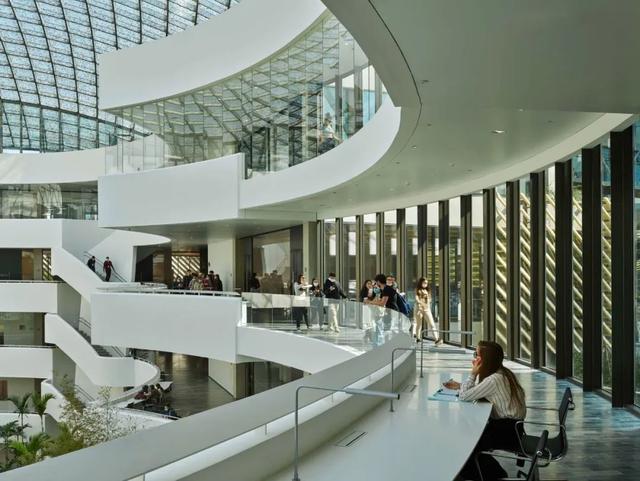
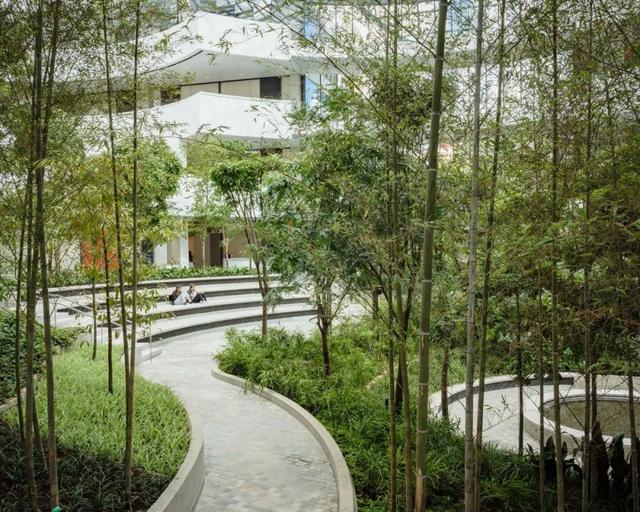
种植设计从中庭向街道延伸,北面是一片竹林,南面是一片棕榈树林。一棵大的Jatobá树,一个受环境保护的本地物种,在施工过程中被保留下来,并被重新安置在建筑主入口附近的一个突出位置。
中庭的鹅卵石地板是当地的石英石,让人想起圣保罗的公共公园如特里亚侬公园的铺装。在街道边缘,像护城河一样的光井,种植着悬垂的藤蔓,将日光带到街道下面的教室和实验室。所有的车道和人行道都使用了可渗透的铺装材料,以吸收雨水,尽量减少雨水径流。
The planting is designed to spill from the atrium out towards the street, with a grove of bamboo extending to the North, and a grove of palm trees to the South. A large Jatobá tree, an environmentally protected native species, was preserved during the construction and relocated to a prominent position near the building’s main entry. The cobblestone floor in the atrium is local Quartzite, recalling paving found in São Paulo’s public parks like the Parque Trianon. At the street edge, moat-like light wells, planted with hanging vines, bring daylight to that classroom and labs below street level. Permeable paving materials are used on all the driveways and sidewalks to absorb rainfall and minimize stormwater runoff.
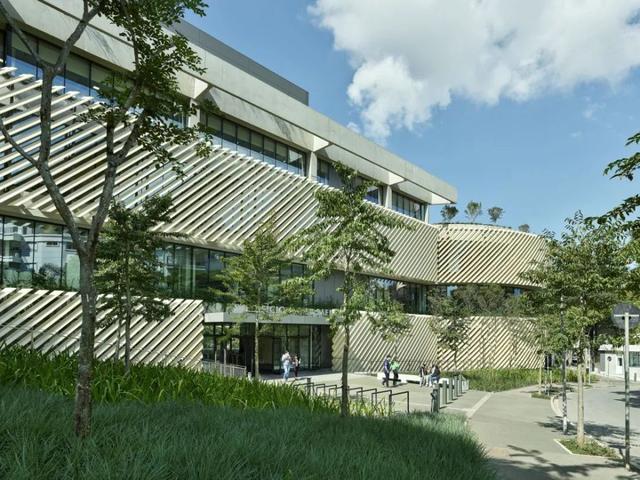
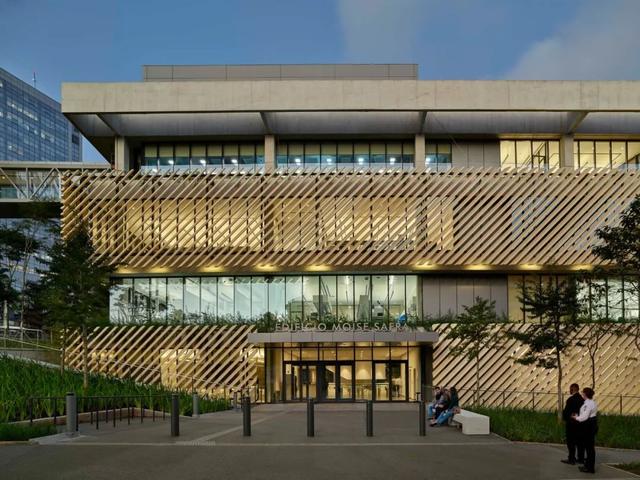
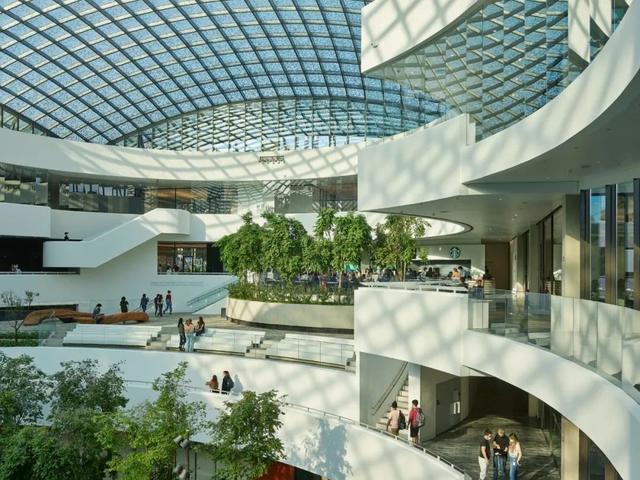
材料。该项目使用了几种当地的木材,包括图书馆的Jequitiba木材和Jatobá木材,礼堂的Cedro Rosso木材。Imbuia木材用于覆盖电梯核心,定制门则是手工从以前的采伐场中挑选的。教室和实验室使用天然橡胶地板,有五种颜色,从陶土红到蛋黄黄,每层一种颜色,定义每层不同的字符,帮助提供方向。家具从巴西当地采购,并选择模块化和可移动的,以服务灵活和不断发展的学习和研究项目。
Materials. Several locally-sourced species of wood are used in the project, including Jequitiba and Jatobá wood for the library and Cedro Rosso for the auditorium. The Imbuia wood used to clad the elevator cores and for custom doors was hand selected from previously harvested lots. Natural rubber flooring is used in the classrooms and labs, in five colors ranging from terracotta red to egg yolk yellow, one color per floor, to define a different character on each floor and help provide orientation. Furniture was locally sourced from Brazil and selected to be modular and mobile to serve the flexible and evolving learning and research program.
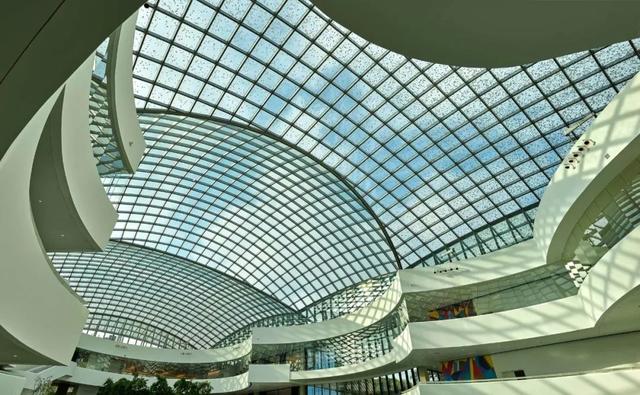
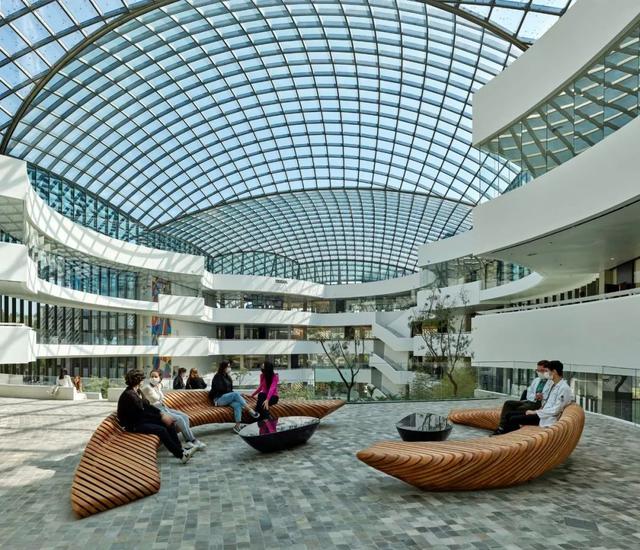
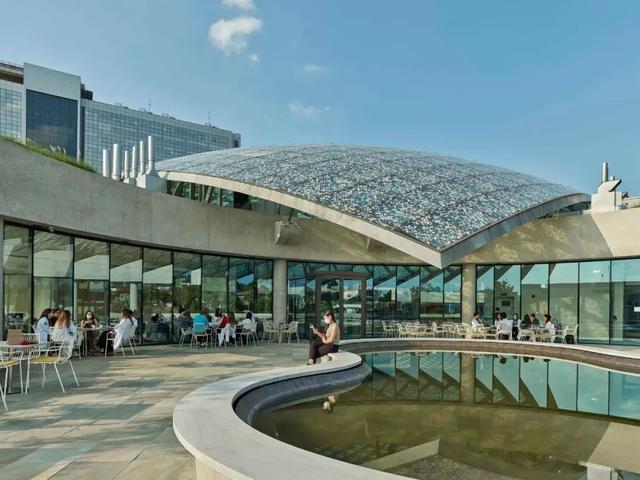
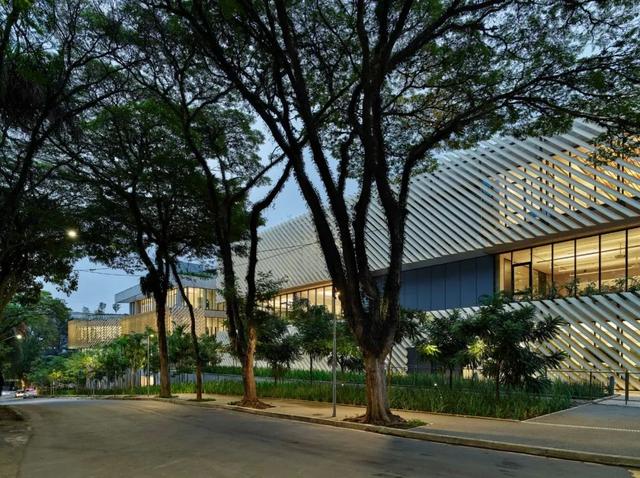

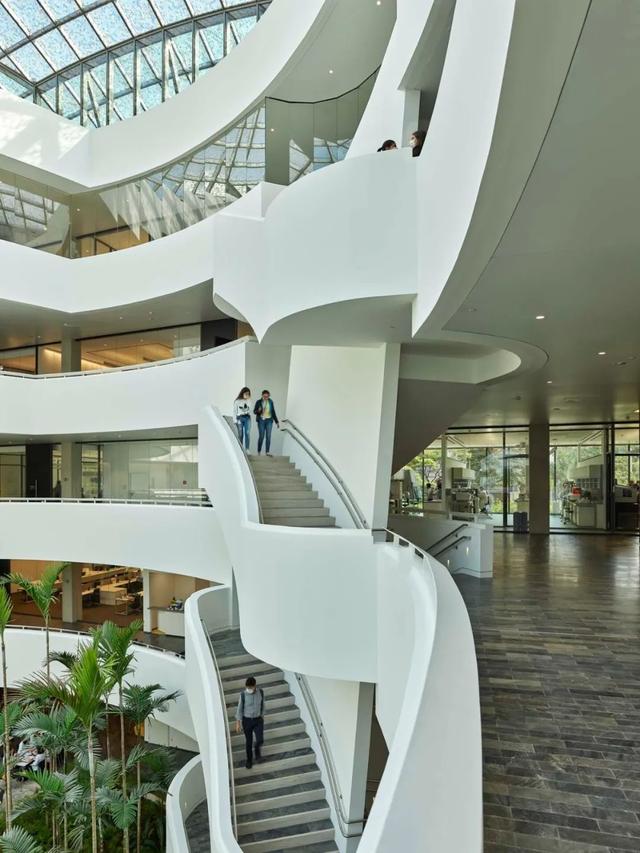
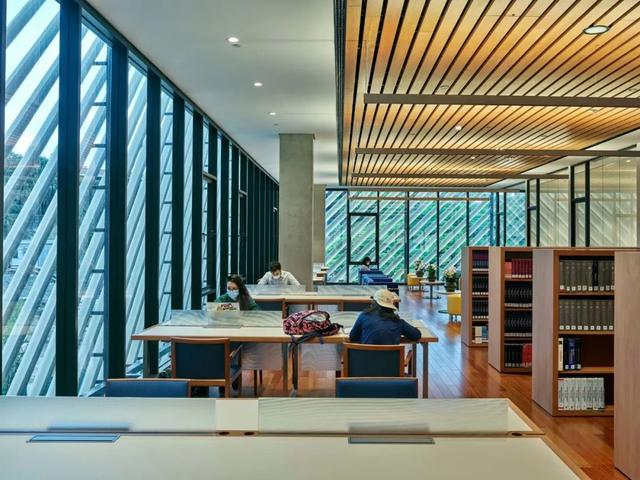
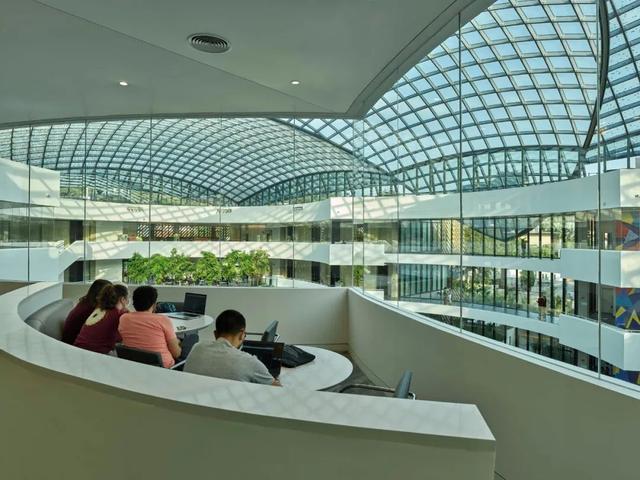
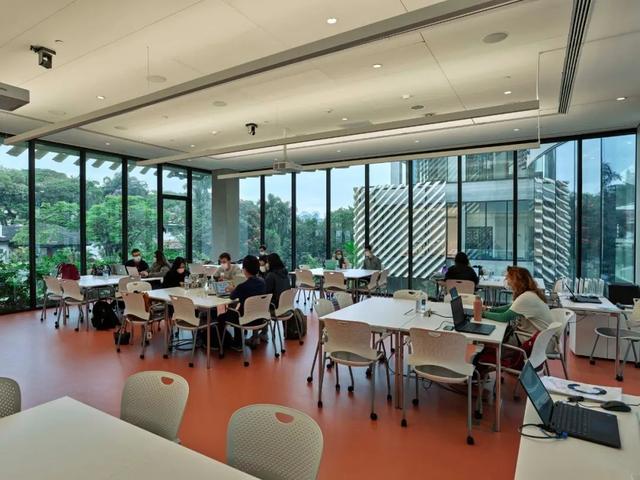
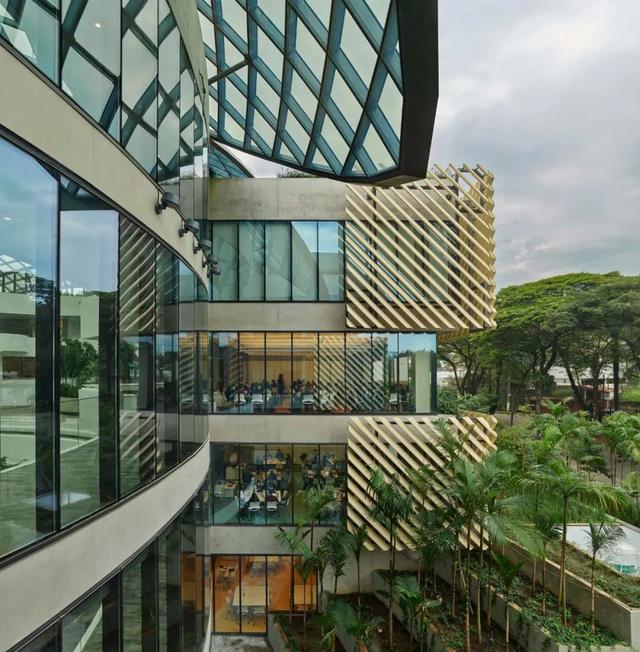
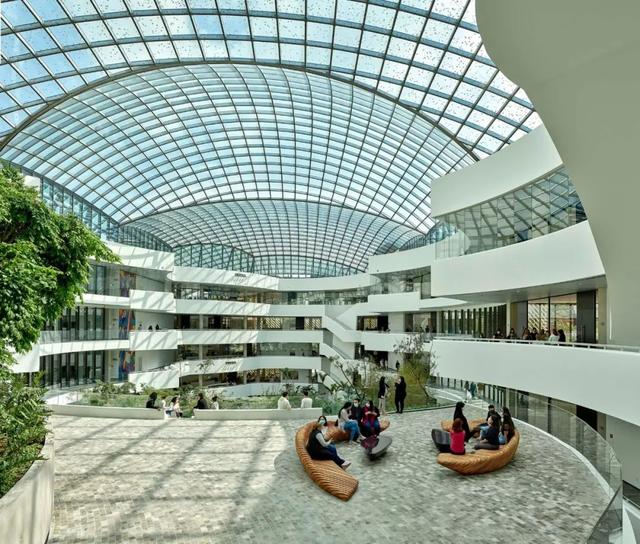

区位图
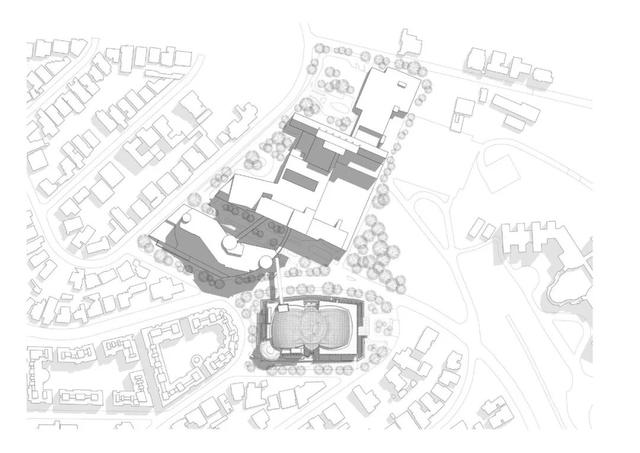
平面图
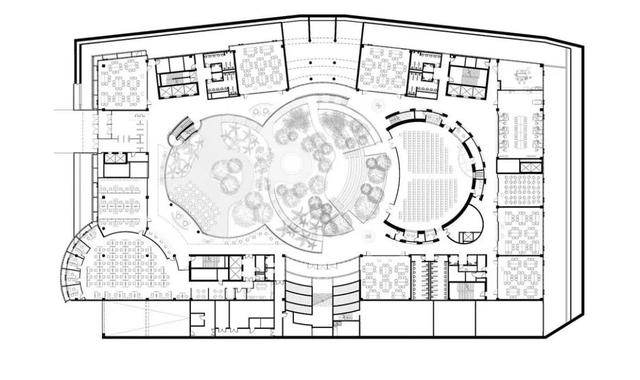



剖面图
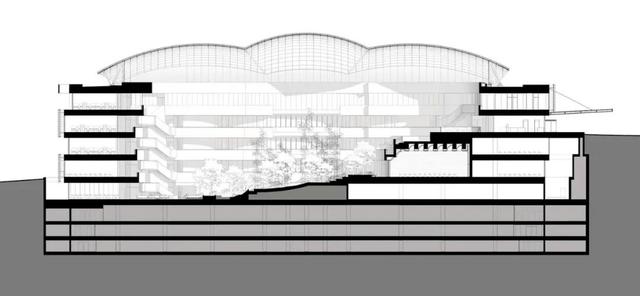

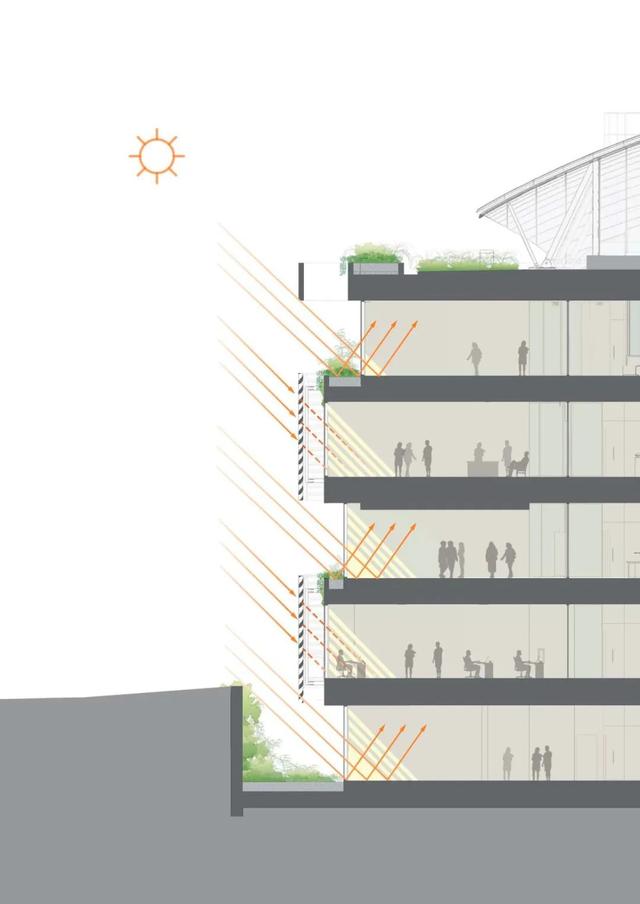
轴测分析图
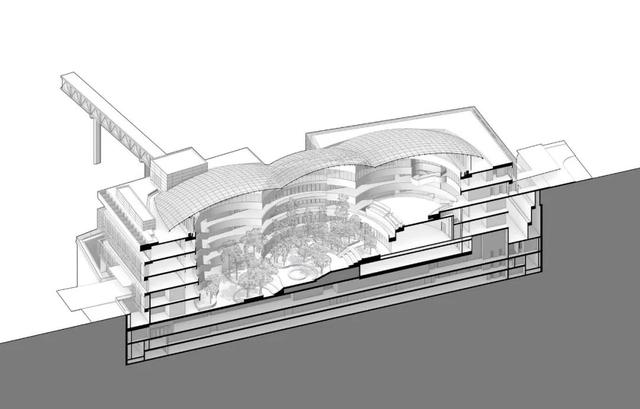
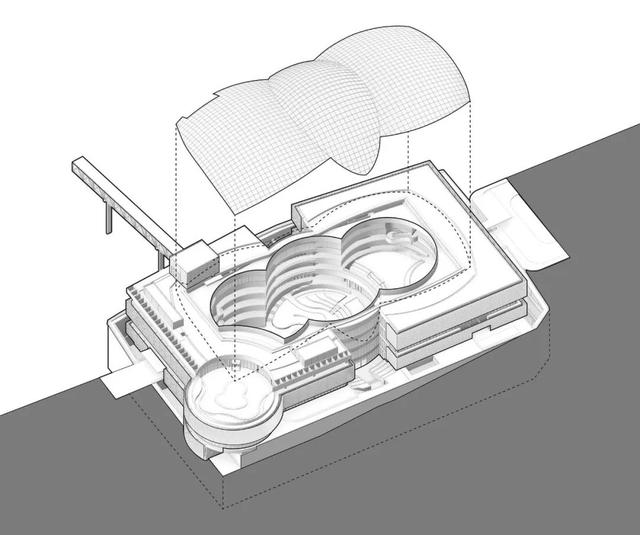
设计构思
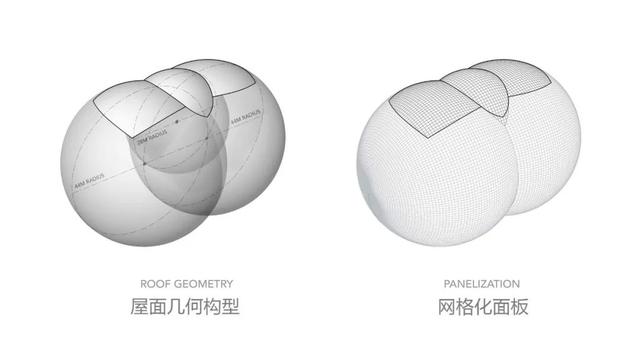

能源分析
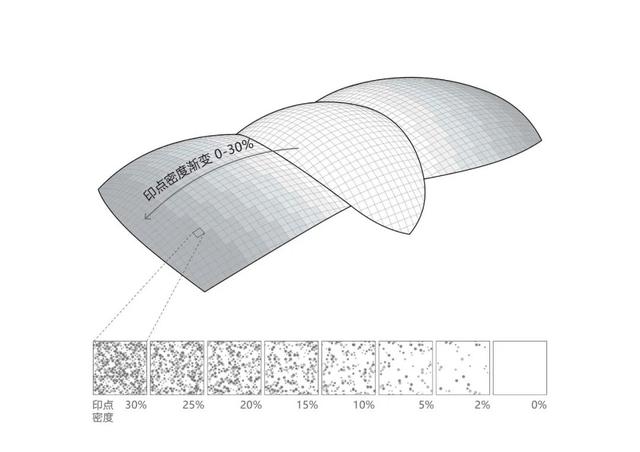
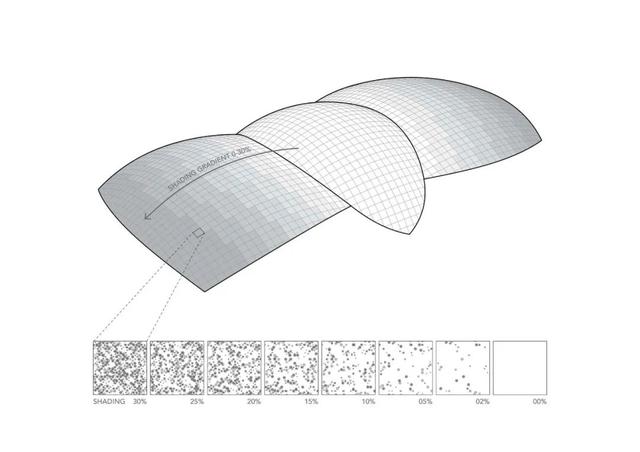
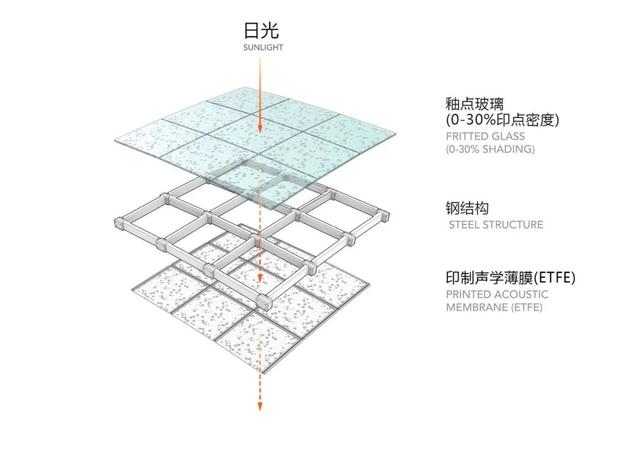
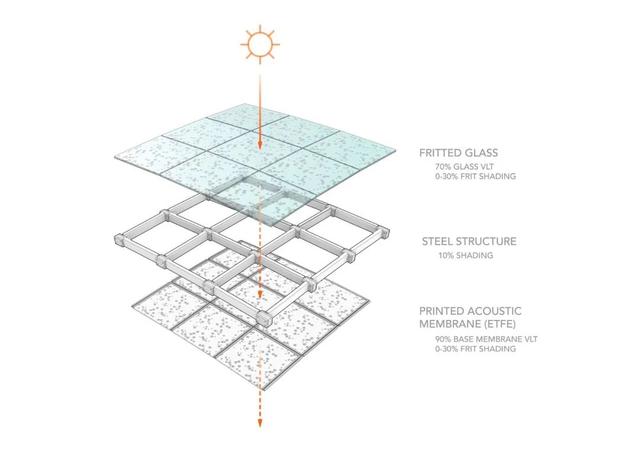
建筑师:Safdie Architects
地点:巴西
面积:44000平方米
年份:2022







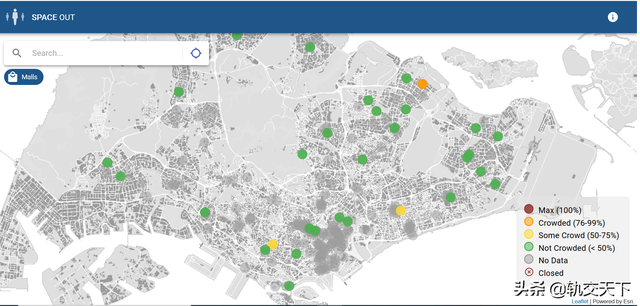
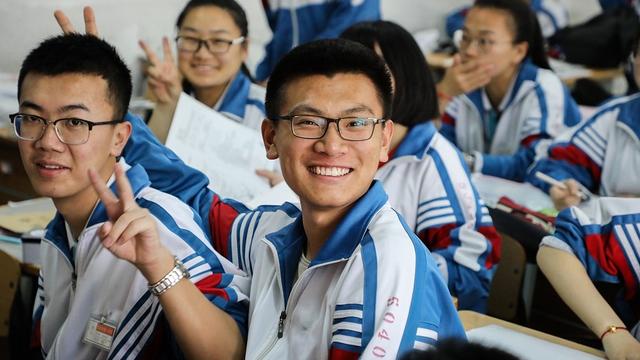
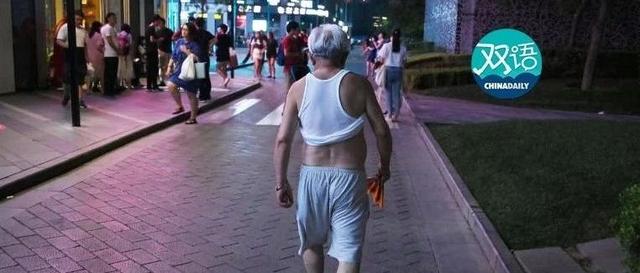
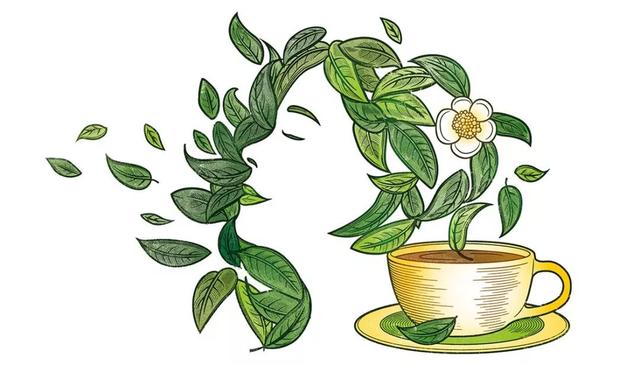
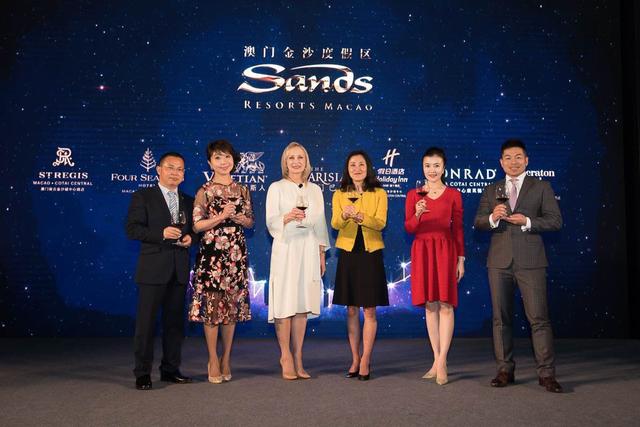










评论